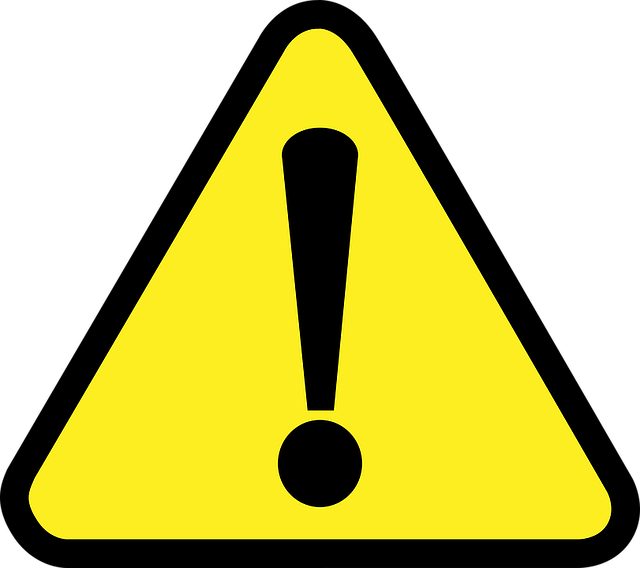Best Free Crypto Signal Website: Top Picks & Practical Guide
Author: Jameson Richman Expert
Published On: 2025-11-06
Prepared by Jameson Richman and our team of experts with over a decade of experience in cryptocurrency and digital asset analysis. Learn more about us.
Looking for the best free crypto signal website can save you time and improve trade entry and exit decisions — if you know how to evaluate and use signals correctly. This guide explains how free crypto signals work, what to look for in a reliable site, practical evaluation steps and examples, risk-management best practices, and where to execute trades safely. You’ll also find curated resources, high-authority references, and useful links to trading platforms and in-depth articles that expand on volume analysis, exchange services, and Telegram bot timing.

What are crypto signals and how do free services work?
Crypto signals are trading suggestions that typically include an asset (e.g., BTC/USDT), direction (buy/sell), entry price, stop-loss (SL) and take-profit (TP) targets. Free crypto signal websites and channels aggregate signals from a mix of analysts, algorithmic bots, social sentiment, or community-shared ideas. The main types of free sources include:
- Telegram channels and bots — real-time alerts, often high-volume and community-driven.
- TradingView public ideas — chart-based trade ideas you can review and verify on the charts.
- Aggregator websites and Discord communities — combine multiple sources and offer filtering tools.
- Automated bots and open-source algorithms — publish signals based on technical setups or market metrics.
Free services lower the barrier to entry, but they vary widely in quality, transparency and timeliness. The rest of this article helps you separate high-value free crypto signals from noisy or risky ones.
Why choose a free crypto signal website — pros and cons
Free crypto signal websites are attractive because they remove cost barriers and provide access to different trading ideas. However, you must be aware of limitations:
- Pros: No subscription fees, exposure to diverse strategies, community feedback and often faster trialing and testing of ideas.
- Cons: Less accountability, potential for spam or pump-and-dump schemes, limited historical performance data, and fewer risk controls than paid services.
Use free signals as leads, not as blind instructions. Validate each signal with your own analysis and trading plan.
Criteria to identify the best free crypto signal website
When searching for the best free crypto signal website, apply measurable criteria. Below are practical filters you should use:
- Transparency: Are signals published with entry/SL/TP and timestamps? Is historical accuracy shown?
- Track record: Look for performance logs, verified results or public backtests. Beware of unverifiable screenshots.
- Signal origin: Is the signal human-curated, algorithmic, crowd-sourced, or a mirror of paid channels?
- Speed and delivery: Does the platform deliver real-time alerts (Telegram, SMS, webhook) or delayed emails?
- Risk management: Does the source include stop-loss levels, position-sizing suggestions, or risk-per-trade guidance?
- Reputation and reviews: Check independent reviews, Reddit threads, and social proof. Beware of fake testimonials.
- Data transparency: Can you cross-check signals on charts (TradingView, exchange order books, volume metrics)?
- Security and privacy: Does the site ask for keys or personal data? Never share exchange API keys with a signal provider unless it’s a trusted automated copy-trading platform.
Checklist: Quick validation before following a free signal
- Is the asset tradable on your exchange?
- Are entry and SL levels realistic (not overly tight or wide)?
- Do you agree with the trade thesis? (trend, pattern, volume confirmation)
- Have you checked recent volume and order flow indicators?
- Does the signal match your risk tolerance and position-size rules?
For guidance on evaluating trading volume — a vital confirmation metric — see this practical guide on checking ETF and market trading volume: How to Check Trading Volume of ETF — Step-by-Step Guide.

Top categories of free crypto signal websites and how to use them
Not every “best free crypto signal website” will suit your style. Below are the major categories, how to use them, and their typical pros/cons.
1. Telegram signal channels and bots
Telegram is the most popular platform for free crypto signals due to its real-time nature and ease of distribution. Channels can be community-driven or operated by analytical teams and bots that push alerts.
- How to use: Join channels with clear formats. Use Telegram’s mute and notification features to manage noise. Prefer channels with timestamps and follow-ups (trade closed, partials).
- Pros: Immediate delivery, large communities, and many bots offering webhooks for auto-trading.
- Cons: High noise-to-signal ratio, susceptibility to scams, and the risk of coordinated market manipulation.
For a deeper look at timing, trends and strategic timing in Telegram bots, read this comprehensive guide: Telegram Crypto Bot Listing Date — The Ultimate Guide.
2. TradingView public ideas and scripts
TradingView offers chart-based ideas and public alerts. Many experienced traders post annotated charts with entry and exit logic — these are excellent for learning and verification, because you can visually confirm setups.
- How to use: Browse popular authors, filter by timeframe and asset, and check historical ideas to estimate win-rate.
- Pros: Chart transparency, community feedback, ability to backtest strategies using Pine scripts.
- Cons: Ideas aren’t always structured signals with SL/TP; more work is required to convert ideas into actionable trades.
3. Aggregator websites and communities
Some websites aggregate signals from multiple sources, display performance stats and allow filtering by timeframe and risk. These can be useful if they provide data verification.
- How to use: Look for verified track records, custom filters (e.g., only long trades, high-confidence signals), and exportable alerts.
- Pros: Consolidates many feeds, easier filtering and ranking.
- Cons: Aggregators can replicate the same signals, giving false impressions of diversity.
4. Social trading and copy-trading platforms
Some exchanges allow following or copying other traders. While often paid or requiring deposits, some offer free feeds or demos. If you plan to copy trades, verify the trader’s historical performance and drawdown metrics.
- How to use: Review full performance history, check risk metrics and choose traders with consistent returns and controlled drawdowns.
- Pros: Hands-off execution and access to experienced traders.
- Cons: Past performance isn’t predictive; transparency matters.
How to verify and backtest free crypto signals (step-by-step)
Verification reduces the chance of following misleading signals. Here’s a practical process to backtest and validate a free signal provider:
- Collect historical signals: Export or copy recent signals for a fixed period (e.g., last 3 months).
- Map signals to price action: Use TradingView or your exchange’s charts to plot each entry, SL and TP.
- Calculate outcomes: For each signal, record whether it hit TP, SL or was closed manually. Track time-in-trade and partial exits.
- Compute performance metrics: Win rate, average reward-to-risk ratio, maximum drawdown and expectancy (average profit per trade).
- Check trade correlation: Do many signals target the same asset/timeframe? High correlation increases systematic risk.
- Stress-test on recent volatile periods: Analyze performance across bull and bear periods; signals that only work in trending markets might fail in chop.
For context on using volume as a confirmation metric in backtesting, see an article that explores average daily trading volume in FX markets — volume interpretation principles often translate across asset classes: Understanding the Average Daily Trading Volume in Forex Market.
Practical examples: turning a free signal into an actionable trade
Example 1 — Signal from a Telegram channel:
- Signal: ETH/USDT long, entry 1,700, SL 1,630, TP1 1,820, TP2 1,950.
- Validation steps:
- Open a 1-hour and 4-hour chart on TradingView to confirm trend and structure.
- Check volume spike and order book (execution risk) — if volume is low, expect slippage.
- Confirm momentum indicators (e.g., RSI, MACD) are supportive.
- Execution: Place limit entry at 1,700 with a hard SL at 1,630; scale out 50% at TP1 and remainder at TP2.
Example 2 — TradingView idea used as signal:
- Author marks a rising wedge breakout in BTC/USDT with suggested entry 55,000 and TP 58,000.
- Validation steps:
- Backtest similar wedge patterns using TradingView’s Bar Replay or Pine Script test logic.
- Evaluate whether breakouts were accompanied by volume confirmation — higher-than-average volume on breakout is preferred. For more on volume analysis across markets consider reading the ETF trading volume guide linked above.
- Execution: Use a stop just below the breakout candle low; adjust size to limit risk to 1–2% of capital.

Risk management: the non-negotiable part
Even the best free crypto signal website cannot eliminate risk. Implement rigorous risk controls:
- Position size: Limit risk per trade to a small percentage (commonly 0.5–2% of account equity).
- Use stop-losses: Always use SL; don’t rely on manual exits when markets are moving fast.
- Diversify: Avoid taking highly correlated signals simultaneously.
- Have an exit plan: Predefine partial-exit rules and trailing stop strategies.
- Monitor liquidity: Trade assets with sufficient 24-hour volume to avoid slippage; use volume resources to confirm liquidity trends (see linked volume guides).
- Avoid overtrading: Do not blindly follow every alert; quality over quantity.
Where to execute trades — reliable exchanges and safety tips
Choose reputable exchanges with strong security, competitive fees and good liquidity. If you’re evaluating whether an exchange supports broader services beyond crypto trading, read this analysis on Binance and its service ecosystem: Is Binance for Crypto Only — In-Depth Analysis.
Popular exchanges you can consider (use official registration links):
- Register on Binance (referral) — large liquidity, many trading pairs and advanced order types.
- MEXC exchange (referral) — good altcoin selection and incentives.
- Bitget (referral) — copy-trading features and derivatives.
- Bybit (referral) — derivatives, advanced order types and liquidity.
Security tips when using exchanges:
- Enable two-factor authentication (2FA) and withdrawal whitelisting.
- Don’t store large balances on exchanges long-term; use cold storage where feasible.
- Never share your API keys with untrusted services; if copy-trading, use read-only APIs or vetted platforms only.
Signs of trustworthy free crypto signal websites (red flags to watch)
Some free services appear attractive but are risky. Watch out for:
- Unverified performance screenshots with no trade logs.
- Guaranteed returns or claims of “100% win rate.”
- Pressure to deposit to a specific exchange or use an affiliate link as the only way to access results.
- Channels that push low-liquidity tokens aggressively (pump-and-dump).
- Requests for API keys that include withdrawal permissions. Legit providers never need withdrawal permissions.

Combining signals with on-chain data and volume analysis
Signals are stronger when supported by objective data: order book depth, exchange flow, on-chain transfers and volume. Use on-chain explorers and exchange volume tools to cross-check signals. The guides linked in this article help explain volume interpretation across ETFs and Forex — concepts that are often transferable to crypto volume analysis. For a primer on cryptocurrencies and underlying mechanics, Wikipedia provides a broad overview: Cryptocurrency — Wikipedia.
Practical tip: Before taking a long signal, confirm whether the 24-hour exchange volume for the asset is above a minimum threshold you set (e.g., $10M) to reduce slippage risk. You can inspect exchange-specific trading volumes directly on the exchange or via market-data aggregators.
How to integrate free signals into a disciplined trading plan
Free signals should augment, not replace, your trading plan. Here’s an integration framework:
- Filter: Apply your own entry criteria (trend, support/resistance, volume confirmation) before executing any signal.
- Size: Scale position size based on conviction and trade risk.
- Execute: Use limit orders where possible to control slippage; use market orders only when speed outweighs price certainty.
- Manage: Use trailing stops or partial profit-taking rules.
- Review: Keep a trade journal for each signal source and update your backtest metrics monthly.
Tools and resources to improve signal use
Several free or low-cost tools help validate signals and automate tasks:
- TradingView — charting, public ideas and Pine scripts for backtesting.
- CoinMarketCap / CoinGecko — quick liquidity and volume snapshots.
- On-chain explorers (Etherscan, BSCScan) — check large transfers and whale activity.
- Portfolio trackers and trade journals — maintain performance records.
- Webhook services and trading bots — for automating execution with careful safeguards.

Case studies: evaluating two hypothetical free providers
Case study A — Channel A (Telegram): Publishes 50 signals/month with clear SL/TP and updates. However, tracked backtest yields a 45% win rate with a 1.6 R:R. Expect moderate profitability but watch for correlated risk.
Case study B — Aggregator B (Website): Aggregates signals from multiple authors and shows verified trade logs through an API feed. It shows a 60% win rate but most signals target low-liquidity tokens. This increases slippage and execution risk, potentially erasing theoretical edge.
Lessons: Always analyze both statistical performance and the practical trading environment (liquidity, execution cost).
Legal and ethical considerations
Signal providers must comply with relevant laws. Be cautious of providers who claim to be financial advisors without proper licensing. Also, avoid channels that facilitate market manipulation or promote pump schemes. If in doubt, consult regulated investment advice or refer to investor protection resources such as the SEC’s investor education pages or similar local authorities.
For general trading practice insights and definitions, Investopedia is a reliable resource: Trading signals — Investopedia.
Final recommendations: how to find the best free crypto signal website for you
To locate the best free crypto signal website:
- Start with a short list of 3–5 free providers from different categories (Telegram, TradingView, aggregator).
- Backtest each provider over a recent 3–6 month period and compute simple metrics (win rate, R:R, expectancy).
- Use a demo account or trade a small size live to verify execution and slippage.
- Prioritize transparency, verified trade logs, and clear risk rules.
- Integrate signals into a disciplined trading plan focused on risk management.
Remember that even the best free crypto signal website will not be profitable for every trader. The edge comes from combining high-quality signals with rigorous validation, disciplined position sizing and ongoing review.

Further reading and tools
- How to Check Trading Volume of ETF — Step-by-Step Guide — useful for understanding volume confirmation techniques.
- Understanding the Average Daily Trading Volume in Forex Market — volume interpretation principles applicable to crypto markets.
- Is Binance for Crypto Only — Services & Outlook — resource for choosing an exchange.
- Telegram Crypto Bot Listing Date — Guide — strategies for timing and bot usage on Telegram.
- Cryptocurrency — Wikipedia — background on crypto fundamentals.
- Trading signals explained — Investopedia.
Ready to trade? Exchange links
If you want to practice or start executing signals, consider reputable exchanges — use the links below to register and explore trading features (these are referral links):
Closing summary
Finding the best free crypto signal website is about matching a source’s transparency, track record, and delivery method with your trading style and risk tolerance. Use the validation steps and risk controls in this guide to filter high-quality signals, and always confirm every alert with chart work, volume checks and sound position-sizing. With disciplined testing and ongoing review, free signals can become a valuable part of your trading toolkit.
If you’d like, I can evaluate specific free signal channels you’re considering — provide the links or names and I’ll run a checklist and a mock backtest plan for those sources.